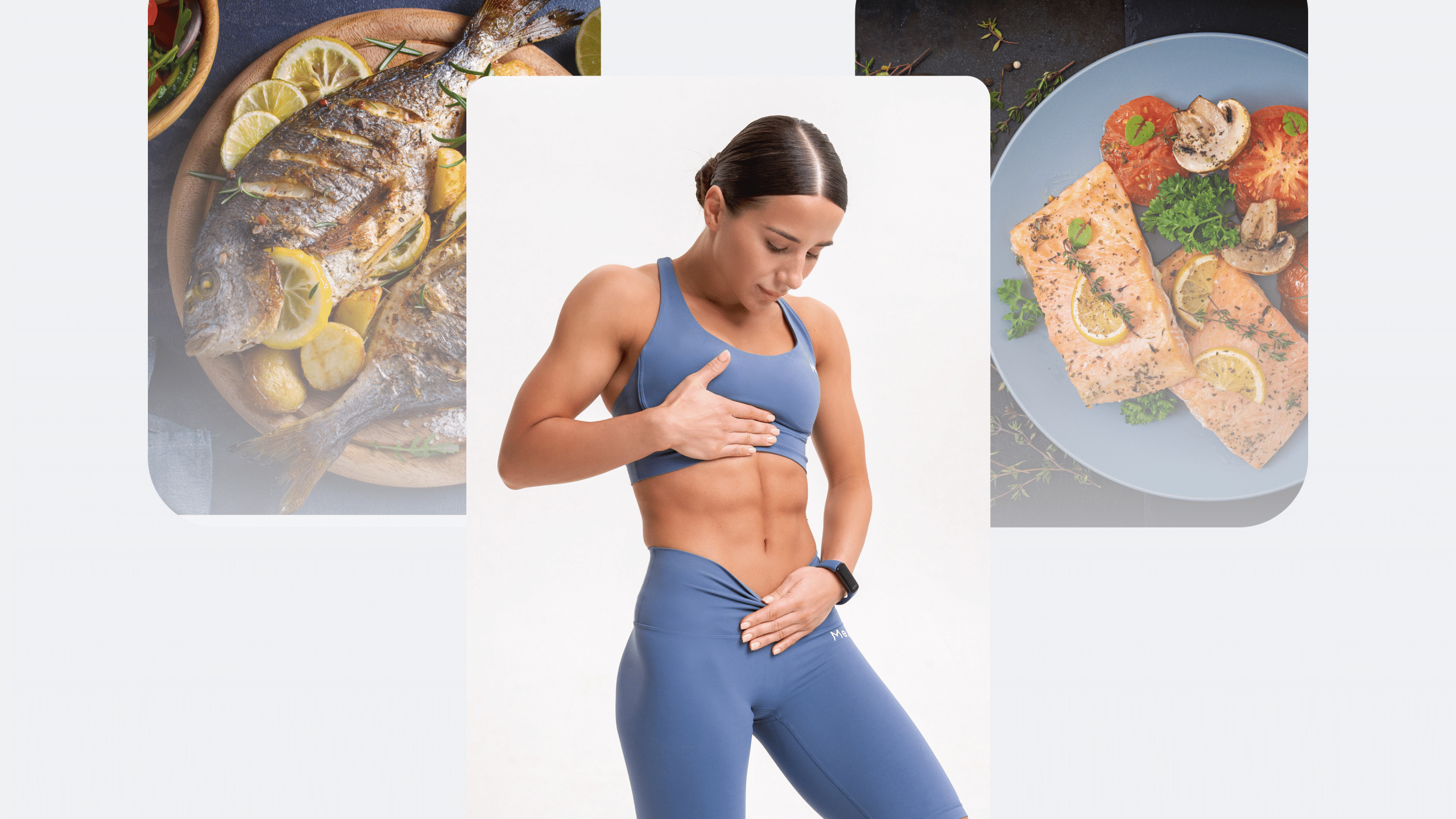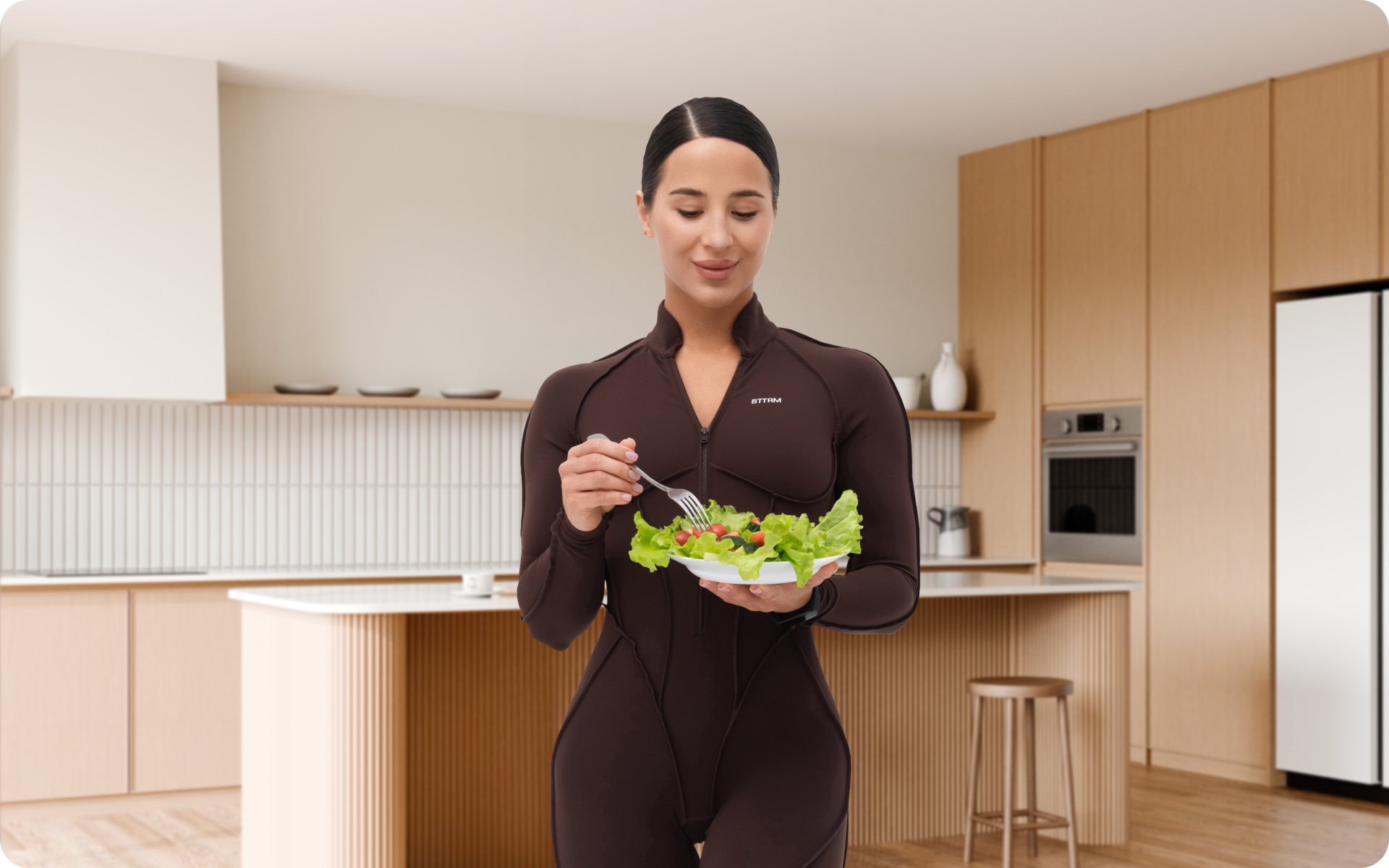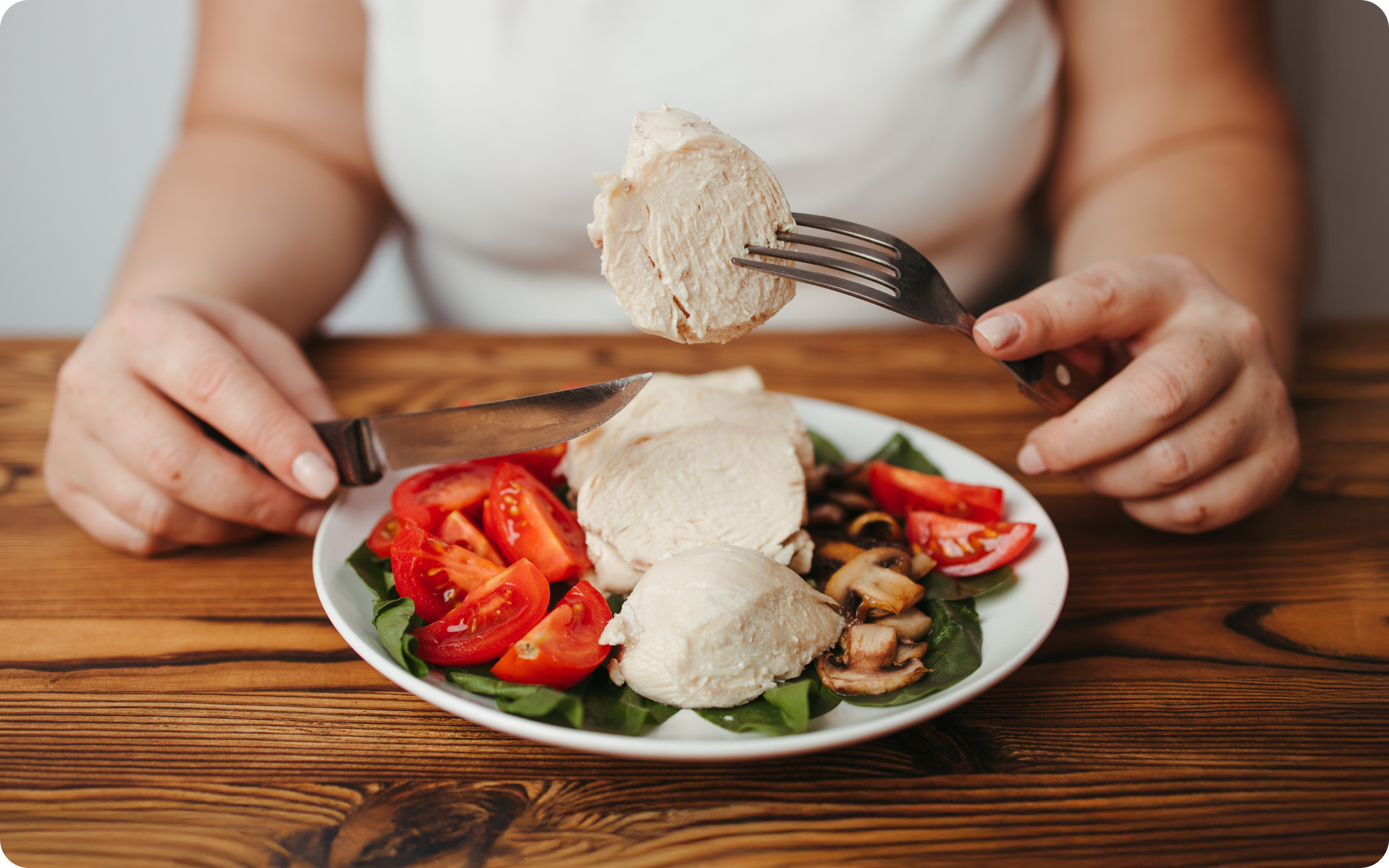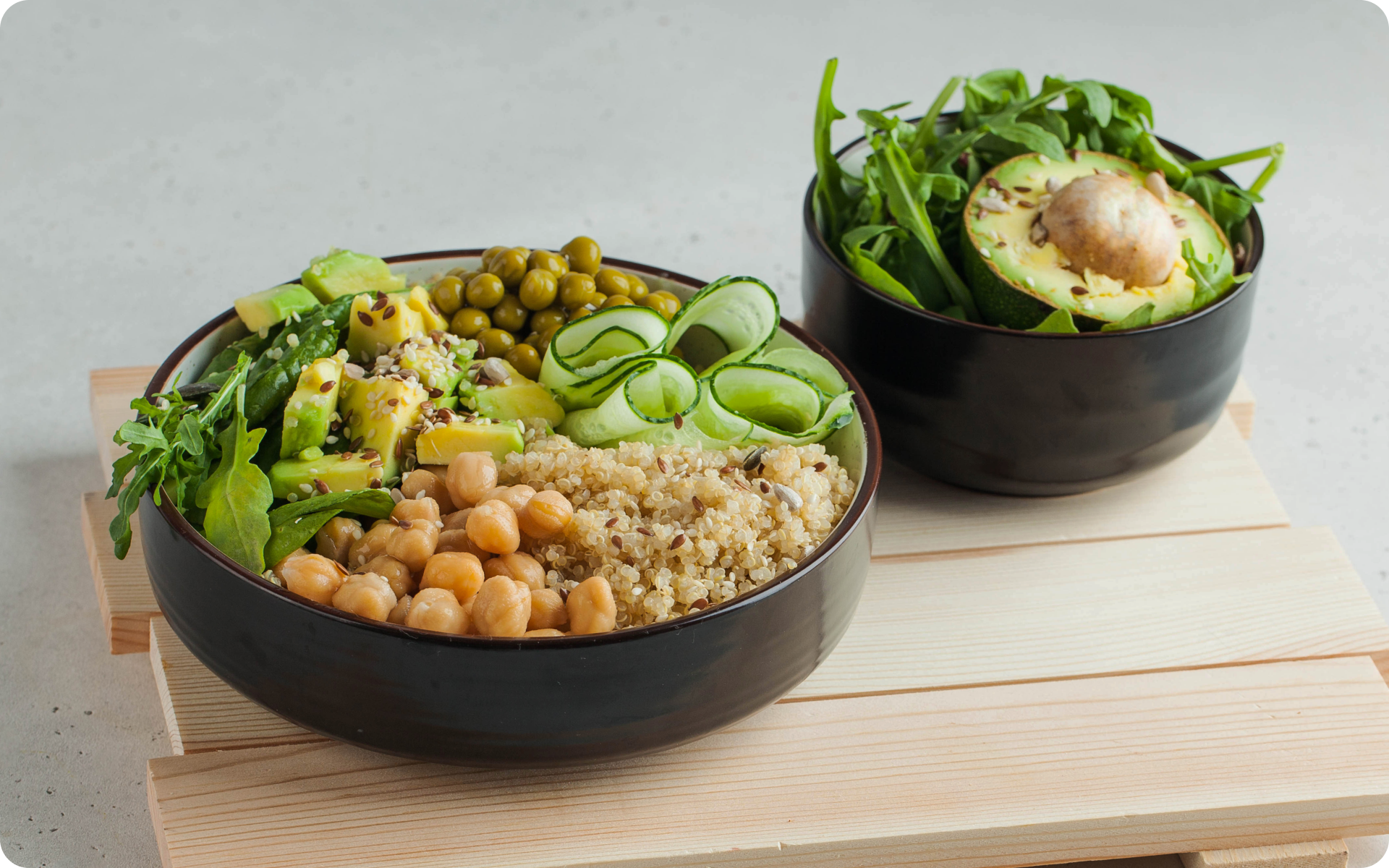In the modern fast-paced world, we’re always short on time and energy to dedicate ourselves to long-term diets. That’s why we end up resorting to any food at hand, which makes it our daily default choice, or jump on the bandwagon of fad diets that takes a toll on our health and bodies. In this article, you’ll learn more about the pescatarian diet, which doesn’t call for drastic lifestyle changes but can still give you the desired results. It’s a culinary adventure that combines the best of land and sea, offering a myriad of benefits for both body and mind. So, what exactly is the pescatarian diet, and how can you dive into its depths? Let’s explore this.
So, What Exactly Is the Pescatarian Diet?
The pescatarian diet is a plant-based approach with a seafood twist. Pescatarians follow a vegetarian diet that also includes fish and seafood and abstain from consuming meat from land animals. This dietary philosophy is rooted in the belief that seafood offers a sustainable and nutritious source of protein, omega-3 fatty acids, vitamins, and minerals, while also minimizing environmental impact in comparison to meat production. The pescatarian diet is a perfect match for those who naturally gravitate to vegetarianism but at the end of the day can’t sacrifice animal protein once and for all (3, 4, 5).
Read More: Different Types of Diets: The Lowdown on the Most Talked-About Weight Loss Strategies
What Are the Rules of a Pescatarian Diet?
Unlike some diets that come with a laundry list of dos and don’ts, the pescatarian lifestyle is refreshingly flexible. There are no rigid rules or strict guidelines, just a focus on seafood and plant-based fare.
For those who are considering the pescatarian path, the key is to embrace variety and balance. Fill your plate with colorful fruits and vegetables, whole grains, and healthy fats. Incorporate a variety of fish and shellfish into your meals, opting for sustainable and ethically sourced options whenever possible. And don’t forget to enjoy the occasional serving of dairy or eggs for added protein and other nutrients. If you want to know what’s on the menu for pescatarians, we break it down in the next section.
What Food Does a Pescatarian Eat?
For those who are curious about the pescatarian diet, understanding the range of foods that are available is essential. Pescatarians have a diverse array of options to choose from, combining the best of land and sea to create flavorful and nutritious meals. Let’s take a closer look at what foods make up the pescatarian plate:
1. Seafood
- Fish: Pescatarians have a wide variety of fish to choose from, including salmon, tuna, trout, cod, halibut, tilapia, and mackerel. These fish offer a rich source of protein, omega-3 fatty acids, and other essential nutrients.
- Shellfish: From succulent shrimp and sweet crab to briny oysters and tender scallops, shellfish add a touch of luxury to the pescatarian diet. They’re also packed with protein, vitamins, and minerals.
2. Fruits and Vegetables
- Leafy Greens: Spinach, kale, arugula, and Swiss chard are just a few examples of nutrient-rich leafy greens that can be enjoyed by pescatarians. They’re packed with vitamins, minerals, and antioxidants.
- Colorful Vegetables: Bell peppers, tomatoes, carrots, broccoli, cauliflower, zucchini, and squash add vibrant hues and essential nutrients to pescatarian meals.
- Fruits: Berries, citrus fruits, apples, pears, bananas, and mangoes are just a selection of the fruits pescatarians can enjoy. They provide natural sweetness, fiber, and a variety of vitamins and minerals (6).
3. Grains and Legumes
- Whole Grains: Brown rice, quinoa, barley, farro, bulgur, and oats are nutritious whole grains that can serve as the foundation for pescatarian meals. They’re rich in fiber, protein, and complex carbohydrates (2).
- Legumes: Beans, lentils, chickpeas, and peas are excellent sources of plant-based protein and fiber. Pescatarians can include them in soups, salads, stews, and stir-fries for added nutrition and satiety (1).
Have you ever wondered how to burn 500 calories a day? Discover effective strategies for achieving your fitness objectives in our comprehensive guide.
4. Nuts and Seeds
- Almonds, walnuts, cashews, pistachios, peanuts, and others: Nuts provide heart-healthy fats, protein, and an array of vitamins and minerals.
- Chia seeds, flaxseeds, hemp seeds, pumpkin seeds, and more: These seeds are packed with omega-3 fatty acids, fiber, and protein, which makes them a nutritious addition to smoothies, oatmeal, yogurt, and salads (4).
5. Dairy and Eggs
- Dairy: Milk, yogurt, cheese, and kefir are calcium-rich dairy products that can be enjoyed by pescatarians if they wish. You should opt for low-fat or non-fat options to keep your saturated fat intake in check (7).
- Eggs: Eggs are a versatile and nutrient-dense food pescatarians can enjoy if they choose to in various forms, such as scrambled, boiled, poached, or as an ingredient in omelets, frittatas, and quiches.
6. Plant-Based Protein Sources
- Tofu: Made from soybeans, tofu is a versatile and protein-rich ingredient that can be used in stir-fries, curries, soups, salads, and sandwiches (8).
- Tempeh: This is another soy-based product. It is fermented and offers a chewy texture and nutty flavor, which makes it a popular choice for plant-based protein.
- Seitan: Also known as wheat gluten, seitan is a meat substitute that is made from wheat protein. It’s high in protein and can be used in dishes such as stir-fries, sandwiches, and wraps.
7. Healthy Fats
- Avocado: Creamy and delicious, avocado is a nutrient-dense source of healthy fats, fiber, and vitamins. Pescatarians can enjoy it sliced, mashed, or blended into smoothies and sauces.
- Olive Oil: Extra virgin olive oil is a staple in Mediterranean cuisine and provides heart-healthy monounsaturated fats and antioxidants. You can use it for cooking, salad dressings, and dips.
- Other plant-based oils
If you struggle to even flirt with the idea of giving up your favorite foods or working out till your legs give way – BetterMe app is here to breathe a fresh perspective into the way you view the weight loss process! Check out the app and experience the fun side of fitness and dieting with BetterMe!
How Healthy Is the Pescatarian Diet?
When it comes to health benefits, the pescatarian diet makes quite the splash. By emphasizing nutrient-rich foods such as fish, fruits, and vegetables, pescatarians can reap a multitude of rewards for their well-being.
Omega-3 Fatty Acids: The Sea’s Secret Weapon
One of the most significant advantages of the pescatarian diet is its abundance of omega-3 fatty acids. Found primarily in fatty fish such as salmon, trout, and mackerel, these essential fats play an essential role in supporting cardiovascular health, reducing inflammation, and promoting brain function (9). In addition, seafood is a valuable source of vitamins and minerals, including vitamin D, vitamin B12, iodine, and selenium, all of which play vital roles in maintaining optimal health. By including seafood in their meals regularly, pescatarians can reap the rewards of omega-3s and safeguard their well-being for many years to come.
Plant-Powered Nutrition
In addition to seafood, the pescatarian diet emphasizes a wide array of plant-based foods, such as fruits, vegetables, whole grains, legumes, nuts, and seeds. These plant-powered ingredients provide essential vitamins, minerals, fiber, and antioxidants that support overall health and vitality. By filling their plates with colorful produce and nutrient-dense grains and legumes, pescatarians can fuel their bodies with the building blocks of good health.
Reduced Risk of Chronic Disease
Research has suggested that adopting a plant-based diet may lower the risk of several chronic diseases, including heart disease, stroke, type 2 diabetes, and certain types of cancer (10). The combination of seafood and plant-based foods offers a potential mix of nutrients that can help regulate blood pressure, cholesterol levels, blood sugar, and inflammation – all of which are key factors in disease prevention and management.
Learn how to kickstart your journey to better health with our “No Sugar Diet” guide, where we delve into the benefits of reducing sugar intake and provide practical tips for navigating a lifestyle free from added sugars.
Flexibility and Variety
One of the defining features of the pescatarian diet is its flexibility. Unlike more rigid dietary regimens, there are no strict rules or prescribed meal plans you need to follow. Instead, pescatarians have the freedom to tailor their eating habits to suit their individual tastes, preferences, and nutritional needs. Whether you prefer to whip up a seafood stir-fry loaded with colorful vegetables or savor a grilled fish filet with a side of quinoa and roasted vegetables, the possibilities are endless.
Can You Lose Weight by Being a Pescatarian?
For those who are looking to maintain a healthy weight or shed excess pounds, the pescatarian diet can be a valuable ally. Seafood is typically lower in calories and saturated fats than red and processed meats, which makes it an excellent choice for those who are watching their waistlines (11).
In addition to protein and healthy fats, the pescatarian diet is replete with fiber-rich foods such as fruits, vegetables, whole grains, and legumes. Fiber adds bulk to meals, slows digestion, and prolongs feelings of fullness, which helps pescatarians stay satisfied long after eating. By filling up on fiber-rich fare, pescatarians can reduce their overall calorie intake, prevent overeating, and support weight loss efforts.
Beyond the specific foods they consume, pescatarians can adopt mindful eating practices and portion control strategies that contribute to weight loss success. By paying attention to hunger and fullness cues, eating slowly, and savoring each bite, pescatarians can foster a greater sense of awareness and enjoyment around food. In addition, by portioning out meals and snacks appropriately, pescatarians can ensure they’re consuming the right amount of calories for their individual needs, which will lead to more consistent weight loss results.
Explore our article on “Calorie Deficit Meals” to discover delicious and satisfying recipes that are designed to help you achieve your weight loss goals through mindful portion control and nutritious ingredients.
What Are the Disadvantages of Being a Pescatarian?
Of course, no diet is without its drawbacks, and the pescatarian lifestyle is no exception to this.
- Mercury Exposure: The regular consumption of high-mercury fish, particularly large predatory species such as shark, swordfish, king mackerel, and tilefish, can potentially lead to mercury poisoning, which can have adverse effects on neurological health, particularly in pregnant women and young children.
- Limited Protein Variety: While seafood provides a rich source of protein, some people may find obtaining a diverse range of protein sources to be challenging on a pescatarian diet.
- Environmental Concerns: While seafood is generally considered to have a lower environmental impact than meat production, certain fishing practices and aquaculture methods still contribute to habitat destruction, overfishing, and pollution.
- Potential Nutrient Deficiencies: Common nutrients of concern include iron, zinc, calcium, vitamin D, and vitamin B12, which are predominantly found in animal-derived foods. Pescatarians may need to pay extra attention to include sources of these nutrients in their diet.
- Cost Considerations: Certain types of fish and shellfish can be more expensive than other protein sources such as poultry or legumes. Budget-conscious people may need to factor in the cost of seafood when they plan their grocery shopping and meal preparation.
While the pescatarian diet offers numerous health and environmental benefits, it’s important to be aware of the potential drawbacks and take proactive steps to address them. By making informed dietary choices, prioritizing nutrient diversity, and considering ethical and environmental concerns, you can navigate the pescatarian lifestyle with awareness and intentionality.
Whether you’re a workout beast or just a beginner making your first foray into the world of fitness and dieting – BetterMe has a lot to offer to both newbies and experts! Install the app and experience the versatility first-hand!
FAQs
What is the best protein for pescatarians?
Pescatarians have a variety of protein options to choose from, with seafood being a primary source. Fatty fish such as salmon, tuna, and mackerel are excellent choices due to their high protein content and omega-3 fatty acids. In addition, plant-based protein sources such as tofu, tempeh, legumes, nuts, and seeds can complement the intake of pescatarians. Some pescatarians also include dairy and/or eggs.
Which is healthier: vegan or pescatarian?
Both vegan and pescatarian diets can be healthy, but they have different nutritional profiles and considerations. Vegans avoid all animal products, including seafood, whereas pescatarians include fish and seafood in their diet but abstain from land-animal meats. Vegan diets are more restrictive and may require more planning to ensure adequate nutrient intake.
Can pescatarians eat fish every day?
While fish is a nutritious and valuable component of the pescatarian diet, it’s important to vary the types and frequency of fish you consume. Some fish, particularly large predatory species, may contain high levels of mercury, which can be harmful if consumed in excess. Pescatarians should aim to include a variety of fish in their diet and be mindful of mercury content by choosing low-mercury options.
How do pescatarians ensure they get enough nutrients?
Pescatarians can ensure they get a balanced intake of nutrients by incorporating a diverse range of foods into their diets. This includes a variety of seafood, fruits, vegetables, whole grains, legumes, nuts, seeds, dairy, and eggs. It’s important for pescatarians to pay attention to their intake of key nutrients such as iron, zinc, calcium, vitamin D, and vitamin B12, and consider supplementation or fortified foods if needed.
Is the pescatarian diet suitable for weight loss?
Yes, the pescatarian diet can be a suitable option for weight loss due to its emphasis on lean protein sources, nutrient-rich foods, and portion control. Seafood is typically lower in calories and saturated fat than red and processed meats, which makes it conducive to weight management. In addition, the abundance of fiber-rich fruits, vegetables, whole grains, and legumes can help promote feelings of fullness and support weight loss efforts.
Can children follow a pescatarian diet?
With proper planning and attention to nutrient intake, children can follow a pescatarian diet that meets their nutritional needs. It’s important for parents to ensure that their children consume a balanced variety of foods, which includes seafood, fruits, vegetables, whole grains, dairy, and eggs, to support growth and development.
The Bottom Line
In a world where dietary trends come and go, the pescatarian diet stands as a testament to the enduring power of healthful eating. By embracing seafood, plant-based foods, and a wealth of nutritious ingredients, pescatarians can nourish their bodies, protect their health, and savor the flavors of a vibrant and diverse culinary landscape. Whether you’re a seafood enthusiast or simply someone who is looking to improve their diet, you should consider diving into the delicious world of pescatarianism — it’s a journey that is worth taking for a lifetime of health and well-being.
DISCLAIMER:
This article is intended for general informational purposes only and does not serve to address individual circumstances. It is not a substitute for professional advice or help and should not be relied on for making any kind of decision-making. Any action taken as a direct or indirect result of the information in this article is entirely at your own risk and is your sole responsibility.
BetterMe, its content staff, and its medical advisors accept no responsibility for inaccuracies, errors, misstatements, inconsistencies, or omissions and specifically disclaim any liability, loss or risk, personal, professional or otherwise, which may be incurred as a consequence, directly or indirectly, of the use and/or application of any content.
You should always seek the advice of your physician or other qualified health provider with any questions you may have regarding a medical condition or your specific situation. Never disregard professional medical advice or delay seeking it because of BetterMe content. If you suspect or think you may have a medical emergency, call your doctor.
SOURCES:
- Health Benefits of Legumes (2019, webmd.com)
- Tips for Reaping the Benefits of Whole Grains (2011, webmd.com)
- What is a pescatarian diet? (2018, medicalnewstoday.com)
- What Is a Pescatarian? (2019, webmd.com)
- What is a plant-based diet and why should you try it? (2018, health.harvard.edu)
- What Is A Pescatarian Diet and What Do They Eat (2023, healthline.com)
- Cut Down on Saturated Fats (2015, health.gov)
- Healthy High-Protein Foods for Standard, Pescatarian and Plant-Based Diets (8fit.com)
- Health Benefits of Fish (doh.wa.gov)
- Plant-based diet lowers risk for chronic diseases, weight gain, death (2018, healio.com)
- What Is the Pescatarian Diet? (2023, health.clevelandclinic.org)










